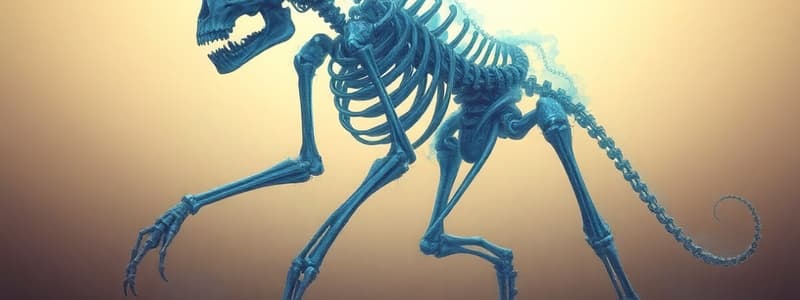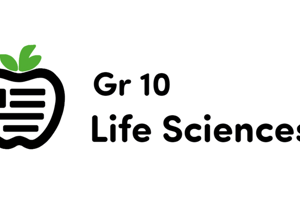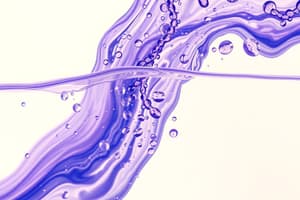Podcast
Questions and Answers
Which of the following is a primary function of the skeletal system?
Which of the following is a primary function of the skeletal system?
- Vitamin synthesis
- Nutrient absorption
- Hormone production
- Protection of internal organs (correct)
What type of skeletal system relies on fluid pressure for support?
What type of skeletal system relies on fluid pressure for support?
- Endoskeleton
- Exoskeleton
- Hydrostatic skeleton (correct)
- Cartilaginous skeleton
Arthropods, such as insects and crustaceans, possess which type of skeletal system?
Arthropods, such as insects and crustaceans, possess which type of skeletal system?
- Hydrostatic skeleton
- Exoskeleton (correct)
- Endoskeleton
- Fluid skeleton
What is the process of shedding and replacing an exoskeleton called?
What is the process of shedding and replacing an exoskeleton called?
Which of the following is a component of the endoskeleton?
Which of the following is a component of the endoskeleton?
What connects bones to each other at joints?
What connects bones to each other at joints?
Which part of the vertebrate skeleton includes the skull and vertebral column?
Which part of the vertebrate skeleton includes the skull and vertebral column?
What type of bone tissue is dense and strong, found in the outer layers of bones?
What type of bone tissue is dense and strong, found in the outer layers of bones?
Which cells break down bone tissue during bone remodeling?
Which cells break down bone tissue during bone remodeling?
What type of joint allows for a wide range of motion?
What type of joint allows for a wide range of motion?
Flashcards
Skeletal System Functions
Skeletal System Functions
Support, protection, and enabling movement in organisms.
Hydrostatic Skeleton
Hydrostatic Skeleton
Skeletal system relying on fluid pressure for support.
Exoskeleton
Exoskeleton
External, hard covering protecting and supporting the body.
Endoskeleton
Endoskeleton
Signup and view all the flashcards
Molting (Ecdysis)
Molting (Ecdysis)
Signup and view all the flashcards
Axial Skeleton
Axial Skeleton
Signup and view all the flashcards
Appendicular Skeleton
Appendicular Skeleton
Signup and view all the flashcards
Compact Bone
Compact Bone
Signup and view all the flashcards
Spongy Bone
Spongy Bone
Signup and view all the flashcards
Joints
Joints
Signup and view all the flashcards
Study Notes
- Skeletal systems provide support, protection, and movement to organisms
Types of Skeletal Systems
- There are three main types of skeletal systems: hydrostatic skeletons, exoskeletons, and endoskeletons
Hydrostatic Skeletons
- Hydrostatic skeletons rely on fluid pressure for support
- Found mainly in soft-bodied invertebrates such as earthworms, nematodes, and jellyfish
- Muscles contract to change the shape of fluid-filled compartments, enabling movement
- The fluid within the compartment maintains a constant volume
- Longitudinal and circular muscles work antagonistically against the fluid to produce movement
- Contraction of circular muscles elongates the body
- Contraction of longitudinal muscles shortens the body
- Advantages include flexibility and the ability to squeeze into small spaces
- Disadvantages include limited protection and support compared to other skeletal types
Exoskeletons
- Exoskeletons are external, hard coverings that protect and support the body
- Found in arthropods such as insects, crustaceans, and arachnids
- Made of chitin, a polysaccharide material
- May be coated with calcium carbonate for added hardness in some species
- Provide physical protection from predators and environmental hazards
- Reduce water loss in terrestrial environments
- Exoskeletons do not grow, so they must be shed and replaced periodically through a process called molting or ecdysis
- During molting, the animal secretes a new, larger exoskeleton beneath the old one
- The old exoskeleton splits open, and the animal emerges
- The new exoskeleton is soft and vulnerable initially, hardening over time
- Arthropods are particularly vulnerable to predation during and immediately after molting
- Advantages: strong protection, support, and leverage for muscles
- Disadvantages: weight limits size, molting is risky, and restricts growth to intermittent stages
Endoskeletons
- Endoskeletons are internal support structures
- Found in vertebrates such as fish, amphibians, reptiles, birds, and mammals, as well as some invertebrates like echinoderms (e.g., starfish)
- Provide support and protection for internal organs
- Allow for greater flexibility and range of motion than exoskeletons
- Can grow continuously with the animal, unlike exoskeletons
- Vertebrate endoskeletons are composed of bone and cartilage
- Cartilage is a flexible connective tissue composed of cells called chondrocytes embedded in a matrix of collagen and other materials
- Bone is a rigid connective tissue composed of cells called osteocytes embedded in a mineralized matrix of calcium phosphate
- Bone provides strong support, protection, and mineral storage
- Bones are connected at joints, which allow for movement
- Ligaments are tough connective tissues that connect bones to each other at joints
- Tendons are connective tissues that connect muscles to bones, enabling movement
The Vertebrate Skeleton
- The vertebrate skeleton is divided into two main parts: the axial skeleton and the appendicular skeleton
Axial Skeleton
- The axial skeleton forms the central axis of the body
- Includes the skull, vertebral column, and rib cage
- The skull protects the brain and sensory organs
- The vertebral column (spine) protects the spinal cord and provides support for the body
- The rib cage protects the heart and lungs
- The vertebral column consists of individual vertebrae separated by intervertebral discs
- Intervertebral discs are made of cartilage and provide cushioning and flexibility to the spine
Appendicular Skeleton
- The appendicular skeleton includes the bones of the limbs and the girdles that attach them to the axial skeleton
- Pectoral girdle (shoulder girdle) connects the upper limbs to the axial skeleton
- Pelvic girdle (hip girdle) connects the lower limbs to the axial skeleton
- The bones of the limbs are adapted for different functions, such as walking, running, swimming, and flying
- The forelimbs of mammals include the humerus, radius, ulna, carpals, metacarpals, and phalanges
- The hindlimbs of mammals include the femur, tibia, fibula, tarsals, metatarsals, and phalanges
Bone Structure
- Bone is a complex tissue composed of both organic and inorganic components
- Organic components include cells (osteocytes, osteoblasts, osteoclasts) and collagen fibers
- Inorganic components include mineral salts, primarily calcium phosphate, which provide rigidity
- There are two main types of bone tissue: compact bone and spongy bone
- Compact bone is dense and strong, found in the outer layers of bones
- Spongy bone is less dense and contains many spaces, found in the interior of bones
- Spongy bone is filled with red bone marrow, which produces blood cells
- Bones are covered by a membrane called the periosteum, which contains blood vessels and nerves
Bone Growth and Development
- Bone growth occurs through two main processes: intramembranous ossification and endochondral ossification
- Intramembranous ossification occurs when bone develops directly from sheets of mesenchymal connective tissue
- Endochondral ossification occurs when bone develops from a cartilage template
- Most bones in the body develop through endochondral ossification
- Bone remodeling is a continuous process in which bone tissue is broken down and rebuilt
- Osteoclasts break down bone tissue, releasing minerals into the bloodstream
- Osteoblasts build new bone tissue, incorporating minerals from the bloodstream
- Bone remodeling is important for maintaining bone strength, repairing damage, and regulating calcium levels in the blood
Joints
- Joints are the connections between bones that allow for movement
- There are three main types of joints: fibrous joints, cartilaginous joints, and synovial joints
- Fibrous joints are immovable or only slightly movable
- Cartilaginous joints allow for limited movement
- Synovial joints allow for a wide range of motion
- Synovial joints are characterized by a joint cavity filled with synovial fluid, which lubricates the joint and reduces friction
- The ends of bones in synovial joints are covered with articular cartilage, which provides a smooth surface for movement
- Synovial joints are reinforced by ligaments, which stabilize the joint and prevent excessive movement
Muscle-Skeleton Interactions
- Skeletal muscles are attached to bones by tendons
- Muscles work in pairs to produce movement
- When one muscle contracts, its antagonist muscle relaxes
- Contraction of a muscle pulls on the bone to which it is attached, causing movement at the joint
- Levers are rigid structures (bones) that pivot around a fixed point (joints)
- Muscles provide the force to move levers, allowing for efficient movement
- The musculoskeletal system is a complex and integrated system that allows for movement, support, and protection
Studying That Suits You
Use AI to generate personalized quizzes and flashcards to suit your learning preferences.
Description
Overview of the three main types of skeletal systems: hydrostatic skeletons, exoskeletons, and endoskeletons. Hydrostatic skeletons rely on fluid pressure for support and are found in soft-bodied invertebrates. Exoskeletons are external, hard coverings that protect and support the body.




